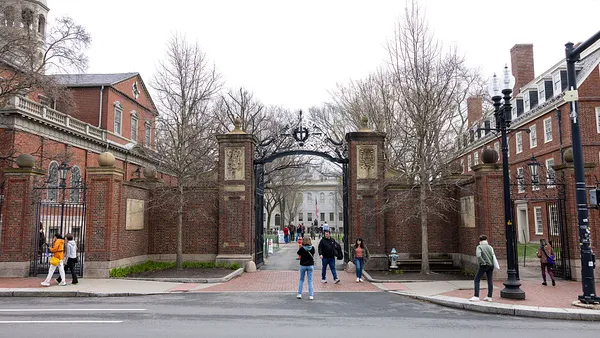Dive Brief:
- Community colleges are in need of investment, and a performance-based federal funding program akin to the Morrill Act — which originally funded higher education for the working class — could help, according to a new policy paper from The Aspen Institute's Economic Strategy Group.
- With a proposed yearly cost of $22 billion, the program would aim to add 3.6 million 18- to 24-year-olds with college degrees and upskill another 28 million workers by 2030 amid a major workforce need for new skills.
- Outcomes would be based on whether students graduate and get good jobs, while funding would take into account the share of disadvantaged students at an institution, local labor market conditions, and improvements in retention and completion.
Dive Insight:
The American workforce is becoming more educated, requiring people to upskill in order to stay competitive. MarketWatch reported in June that employers hired those with a college degree for nine out of 10 jobs that were created in the prior 12 months.
Yet not all degrees are equal. In fact, many employers are finding a discrepancy between the jobs they need to fill and the education levels of prospective hires. In an October report, the Urban Institute's Molly Scott and Demetra Nightingale called that phenomenon a "mix-match", with around two-thirds of entry-level jobs requiring a high school diploma or less and 60% of the population having more than that level of education.
It's in this landscape that the Aspen researchers make their ambitious proposal to pump up investment in community colleges. Their three-part plan aims to increase the number of workers with a college education; expand opportunities for those upskilling mid-career; and develop more opportunities for those without a college education to complete high-quality certificate programs. Their goals hinge on funding that would help close the gap between per-student funding at community colleges ($11,400) and public four-year institutions ($14,900).
"American institutions of higher education must be prepared to serve students throughout their careers with a flexible, market-driven model of education," the researchers write. Rather than "proposing the creation of new, untested public programs" they suggest "improving pre-existing public institutions at scale to better serve these purposes."
They came to their conclusions with the help of a working group of higher ed and private sector heavy-hitters. Among them, American University President Sylvia Burwell; Purdue University President Mitchell Daniels; University of North Carolina System President and former U.S. Education Secretary Margaret Spellings; and Google Chief Financial Officer Ruth Porat.
Adequate resources are a concern for community colleges as public pressure grows around the need for upskilling and degree attainment. The rise in free college programs has drawn attention to this issue, with participating colleges often choosing between serving more students with fewer dollars per student or serving fewer students altogether.
Like their four-year counterparts, community colleges face several economic and demographic challenges, including a projected decline in high school graduates, growing reliance on tuition revenue and competition from the for-profit sector, according to EAB.
To combat this, community colleges are focusing on new workforce skills needs, as well as implementing efficiency-minded changes such as streamlined remedial education programs.














